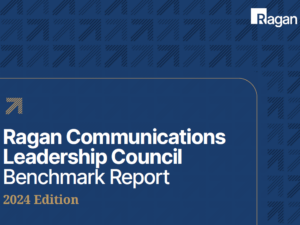How to reimagine your measurement toolkit for the ‘next normal’
In order to prove your value as a communicator in the future, your measurement will have to be more sophisticated and take advantage of these emerging tools.

I can’t tell you how many clients have told me in recent days that when their agency presents results, they know they are “B.S.” because the numbers are ridiculous.
We know that professional communicators are far more than just flacks for bad people or cheap alternatives to advertising. Public relations as a practice can and does educate and persuade, provide context and perspective, whether in a crisis or advocating for a cause. But it gets a bad rap because it reports its results in trillions of impressions or billions of clicks.
What it should be measuring these days are the things it is best at: saving money by building relationships, trust and empathy; framing and positioning the organization on relevant issues; nourishing loyalty; protecting and enhancing reputations; and helping your organization get found when someone is looking for you.
Sadly, none of those wonderful benefits are measured by what most people use for metrics these days.
The good news is that there are a number of tools available today or on the near-term horizon that can measure what needs measuring right now. The bad news is that very few practitioners realize they need them in their toolkits.
1. You need a little AI love in your life.
Tech platforms have been touting their artificial intelligence and “machine learning” capabilities for years, but until very recently no one had actually delivered a usable tool that used either one. In fact, after a heated discussion last October at our Summit on the Future of Measurement in which half the people there mentioned AI as part of the future, I dismissed the entire notion by saying that AI wouldn’t be useful to PR pros until it could tell them how to respond to a potential crisis.
One of the attendees, Full Intel CEO Gaugarin Oliver took the challenge, and six months later I stood corrected. Oliver teamed up with Texas A&M Professor W. Timothy Coombs, who literally wrote the book on crisis response (actually several of them), and used Coombs theory to teach his AI system to detect a brewing crisis, identify the type of crisis it was (according to Coombs SCCT theory) and select the best possible response, defined by which produced the fastest return to neutrality after a spate of negative press.
In a time when crises happen every day and sometimes every hour, your need help from AI to get you through.
Talkwalker has also turned its AI tools onto helping out brands in these new and unsettling times, developing a “Love Index” that identifies America’s favorite 50 brands. Far more important, however, is that in the process of identifying the top 50, they were also able to identify the specific things that those brands do to be come so lovable. So next time the haters get you down, you can turn to their report and figure out how to get the love back.
In a similar vein, Signal.AI optimized its platform to provide insight into how you and your peers might be positioned on key issues. What used to be a laborious manual process—and far too expensive to include competitors—is now accessible through a couple of clicks.
2. You need your own Magic 8 Ball.
Even if you don’t face the threat of constant crisis, it always helps to be able to predict the future and your toolbox definitely needs a personal Magic 8 Ball (if you’re too young to remember them, you’d ask the 8-ball a question, turn it upside down and find your answer).
There were 20 pre-programmed answers which was pretty limited. In contrast Proof (proofanalytics.ai) is designed to analyze years of communications, marketing and financial data to inform you on where you should spend your budget going forward. Most recently, it’s identified 80 of the most frequently asked problems or questions that communications professionals have, and provide the answers using your own proprietary data.
Conversus.ai is another handy dandy prediction machine. Conversus.ai not only analyzes your data to tell you what happened but based on that data can predict what’s coming next. They’ve already got modules designed to address specific issues like trust and mistrust, CSR, advocacy and loyalty.
3. You need to connect your results to the bottom line.
Perhaps the biggest trend today is integration of multiple disciplines and data streams into a single dashboard that can show contribution to business goals—a process that used to take a tremendous amount of technical expertise, money and time. Now tools like Google Data Studio make the process fast and easy so you can spend your time gleaning insight from your data, not copying data between Excel sheets.
And speaking of Google, Google Surveys now provides all of us with a way to conduct surveys for free. You can no longer claim it’s too complicated or expensive to measure trust, or empathy or employee engagement these days. Just pick 5 or 6 statements from any number of existing survey instruments like the Grunig Trust Survey (also free) set them up on a 1-7 Likert Scale (Strongly Agree to Strongly Disagree) in Google Surveys, and send them out.
4. You need to know if you can be found.
Increasingly, for PR folks, search rankings are becoming the go-to metric to replace that vague, ubiquitous goal of “awareness.” The best way to gauge whether you are making progress on any of those fronts is to check Google. If Google turns up mentions of your progress in the first page, congratulations, you’ve been successful. If you’re down on page 10 you need a new strategy. You also need tools like MOZ and Spy Fu to measure your progress and Answer the Public to figure out what terms you should use to be more relevant.
Those are all tools that are available today for your reimagined toolkit—but new ones are being introduced every month, and expect a flurry of new developments in November, Measurement Month, and around the PRSA International Conference at the end of October.
Katie Delahaye Paine is the CEO of Paine Publishing LLC and publisher of The Measurement Advisor. Find her on Twitter @queenofmetrics.






